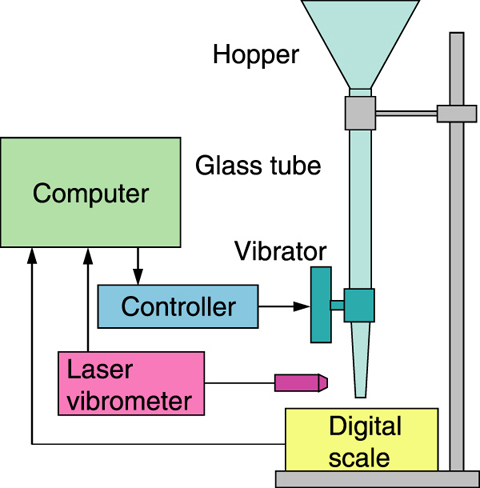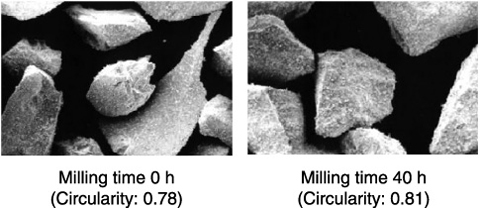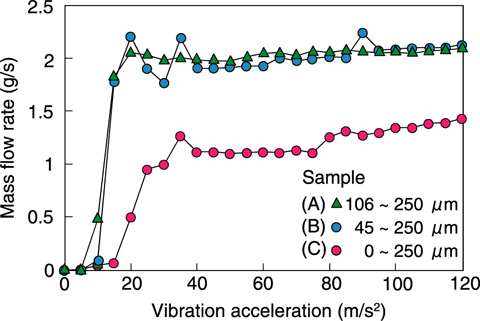
Fig.1-16 Vibrating tube method schematic diagram

Fig.1-17 SEM photographs of ZrO2 particles

Fig.1-18 Flowability profiles of ZrO2 smaller than 45 μm

Fig.1-19 Flowability profiles of ZrO2 smaller than 250 μm
It is necessary to employ raw MOX particles having excellent flowability for production of MOX pellets, because flowability affects the output of green pellets, and a non-uniform packed structure of particles in dies sometimes causes defective products. The flowability of MOX particles is currently evaluated by a method based on Carr’s flowability index. In order to reduce the measurement time in the glove box, the applicability of a vibrating tube method, which is a new flowability measurement method, was examined using non-radioactive model particles.
The vibrating tube method (Fig.1-16) evaluates flowability based on measurement of the mass flow rate of particles discharged from the vibrating tube while the vibration acceleration is changed. This method has advantages such as a simple structure, easy operation, and short measurement time.
In this experiment, ZrO2 particles having different shapes and surface states (Fig.1-17) were prepared by changing the milling time, and the particle size distribution was varied by changing the concentration of fine particles.
Fig.1-18 shows the mass flow rate dependence on vibration acceleration (flowability profiles) of ZrO2 particles smaller than 45μm in diameter. The flowability of particles with higher circularity (longer milling time) is more excellent, because a smaller vibration acceleration is required to initiate flowing. The vibration tube method can differentiate between s amples with higher sensitivity than a method based on Carr’s flowability index.
Fig.1-19 shows the flowability profiles of ZrO2 particles smaller than 250 μm. (A) refers to particles 106 ~ 250 μm in diameter, (B) refers to 45 ~ 250 μm, and (C) refers to 0 ~ 250 μm. Profile (C) is strikingly different from the other profiles, which indicates that vibrating tube method can detect degradation of flowability by fine particles smaller than 45 μm.
For the next step, we are planning to measure the flowability of UO2 and MOX particles to confirm the applicability of this method to the MOX pellet production line, such as in quality checks of MOX particles before and after granulation.